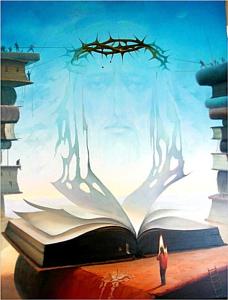These are dark days, aren’t they? I’m not talking about the relentless spread of COVID-19. I’m being literal here. It’s that time of year when the days are short and the nights are long, as we move closer to the darkest day of them all, December 21st. That’s the day with the least amount of sunshine and from that day on we gain more light each day for 6 months running.
This lack of sunlight has long troubled people. In ancient times, many cultures believed the days grew shorter because the sun was leaving them, never to return. So each year they conducted a series of rituals and ceremonies to honor the sun, who they saw as a god, and persuade it to come back. Yvonne Jeffrey, writing in The Everything Family Christmas Book, explains:
Festivals were held right before December 21, the winter solstice, and featured rituals designed to appease the sun and make it return. After the solstice, the shortest day of the year, the days became longer again and grand celebrations were held in honor of the sun’s return.
In the Roman empire, on December 25, AD 274, sun worship was even recognized as an official religion named Sol Invictus. But over the years, the celebrations to thank the sun were combined with the day we now use to mark the birth of Jesus—and the focus was changed from a pagan celebration to one that honored Christ. As Jeffrey points out, there is a common theme between the two. They are both celebrations of the coming of the light. In her words:
Christ represents life, triumph over death and darkness, and restored hope and light. Rather than celebrating the sun as before, people started celebrating the Son of God. Put simply, the birth of Christ replaced the birth of the sun as a cause for celebration.
Christmas is a time to move toward the light.
The people walking in darkness have seen a great light; on those living in the land of deep darkness a light has dawned. ~Isiah 9:2
In The Soul of Christmas, Thomas Moore talks about the darkness of the season and how Christmas represents a turning toward the light. His words are especially poignant this year as we deal not just with the debilitating effects the lack of light can have on our moods, but the social isolation of the pandemic which has left many of us feeling disconnected from the real world. More empathizes with our feelings of unease, writing that:
Christmas makes sense only if you know the experience of darkness—the experience of not knowing what is going on, not knowing your way, not seeing life for what it is, failing, losing and suffering. Then the turn toward light has a real impact. The more you know the dark, the more you will appreciate the light.
Moore points out how the rituals of Christmas have a way of lifting our spirits. We are drawn to and celebrate light, by illuminating the outside of our homes with colored bulbs, lighting scented candles, or at my home, flicking on the baby Jesus that sits under our tree. We bring freshly cut trees into our home and decorate them, listen to Christmas music and bake holiday cookies. He continues:
At Christmas time we take a break from the ordinary and turn some of our serious rules upside down. At this time, we spend more money than usual if we have it, eat foods off our normal diet, and invite people we rarely see into our homes. These momentary indulgences are of absolute importance because they speak to the soul.
He also writes of how his own perspective of Christmas has evolved over the years. He no longer looks for perfection, but for “joy and happiness.” He sets his sights on the many small pleasures that Christmas brings, writing:
At Christmas we don’t wish each other perfect lives but only comfort and joy. Central to the Christmas message is to be merry, to have a hopeful, positive and optimistic attitude, even if your health is bad or life is not at its best…seeing the beauty and goodness of life, in spite of all the bad stuff.
While Moore appreciates the rituals and pageantry that surround the holiday, he never loses sight of the religious aspect of Christmas. He once wrote that we need to “put more Santa into Christmas” and he deftly tells us how the two aspects of the holiday are intertwined.
I now see how Christmas and Jesus’s vision line up, and I see that the enchantment of Christmas is a taste of what would be possible if human beings could really love each other…the infant in the manger symbolizes the new life in me, the potential I have to be a new kind of being dedicated to agape, to a love of the other whoever he or she is.
Moore tells us how we might get even more joy from the holiday, suggesting that we “be of good cheer, give some real gifts, make some good food, and spend more time than usual with friends and family.” Even if these days, spending time with loved ones means connecting over our phones or on Zoom. His closing words in the book are a reminder of the powerful way Christmas can touch us all.
If you take Christmas to heart and get past the anxieties in arranging for gifts and parties, you will rediscover yourself every year. It will be a celebration of both the birth of Jesus and the birth of your own soul.

















